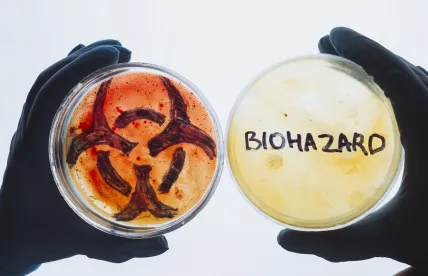Recently, there have been several food warnings and recalls based on confirmed or suspected Listeria contamination. Some recent culprits have been smoked salmon, turnip sticks, pre-made sandwiches, ice cream bars, cream cheese, green beans, and frozen meatballs. Fresh, raw, and unpasteurized products are especially susceptible to Listeria contamination.
What Is Listeria?
Listeriosis is food poisoning caused by eating foods contaminated with the Listeria monocytogenes (L. monocytogenes) bacterium. An estimated 1,600 people contract listeriosis each year and about 260 die. Listeriosis mainly affects pregnant women, newborns, the elderly and adults with impaired immune systems. Healthy adults and children may become infected with L. monocytogenes, but rarely become seriously ill.
Symptoms of listeriosis include fever, muscle aches, and sometimes nausea or diarrhea. If infection has spread to the nervous system, symptoms such as headache, stiff neck, confusion, loss of balance, or convulsions can occur. Otherwise healthy persons do not need treatment, and symptoms will abate within a few weeks. When treatment is necessary, antibiotics are used. Pregnant women often are prescribed antibiotics to prevent infection of the fetus or newborn, but some babies born with the infection also may have to receive their own round of antibiotics.
Why does it seem like Listeria contamination has become more common?
Listeriosis is usually diagnosed with a bacterial culture from blood, spinal fluid, or the placenta. The typical time from consumption of the contaminated food to experiencing symptoms is between 1 to 3 weeks. Otherwise healthy adults typically recover without becoming seriously ill. Add to that the myriad other reasons why a person may experience similar flu-like symptoms, and it is easy to see how many cases of potential listeriosis could go without diagnosis.
Science has aided investigators in determining the source of infectious organisms such as Listeria through DNA fingerprinting. This process involves comparing the DNA fingerprint patterns of Listeria bacteria to determine if they came from the same source. Epidemiologists investigate clusters of people who have bacteria with the same DNA fingerprint to find out what they have in common. This method can be used to trace the source of the Listeria, often narrowing it down to a particular food product, manufacturer, or even a particular production line. This ability to identify the source of the bacterium enables public health officials to work with the manufacturer to stop the outbreak and initiate recalls when necessary. With the development of these scientific tools, what otherwise might have been called the “stomach flu” is being identified, fingerprinted, and traced in an effort to prevent major or widespread outbreaks. While it may seem like Listeria contamination has become more common, this is likely due to better methods for identifying the actual cause of a person’s illness.
How can you prevent the spread of Listeria?
Listeria is found in soil, water and decaying vegetation and in the gastrointestinal tracts of many animals. It is especially difficult to control because it can grow in the refrigerator and survive below-freezing temperatures.
Listeriosis can be prevented by safe food handling practices. Bag raw meat, poultry, and fish separately from other food items. Wash hands before and after handling food. Wash fresh fruits and vegetables with running water. Use two cutting boards, one for fresh produce and one for raw meat, poultry, and seafood. It is simple to color-code the utensils and cutting boards and restrict their use to certain food products. Wash knives and cutting boards in the dishwasher to disinfect them. Set the refrigerator to 40ºF (4ºC) or colder. Clean up any spills, especially from hot dogs, raw meat, and poultry, immediately. If you are unsure whether a food is safe, do not eat it. Reheating contaminated food will not make it safe.
Limiting consumption of foods more likely to become infected is another way to prevent the spread of Listeria. While health advocates have been touting the benefits of consuming raw foods, there is a risk associated with drinking beverages or eating food products that have not been pasteurized. Pasteurization is the process of heating a product to over 140ºF. By heating the product to high temperatures, harmful organisms such as the L. monocytogenes bacterium are killed.
According to the Centers for Disease Control and Prevention, soft cheese made with unpasteurized milk (also called raw milk) are estimated to be 50 to 160 times more likely to cause Listeria infection than when they are made with pasteurized milk.
While listeriosis can be a serious condition, following simple, good food-handling procedures can significantly reduce the risk of contamination. Education, protocols, and color-coded utensils are three easy steps that can be taken to minimize the risk.
For more information, visit the Centers for Disease Control and Prevention website www.cdc.gov/listeria.



 />i
/>i

